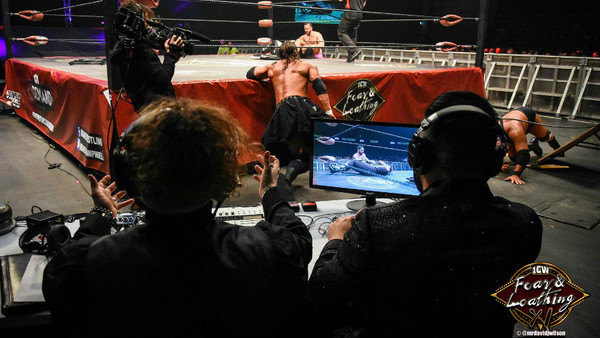10 Things You Learn As A Wrestling Commentator
4. Know Where The Cameras Are

If you're working for a smaller indy promotion, it's unlikely you'll have a monitor. Sometimes, even in the more professional set-ups, you won't have one anyway. It's my job to deal with that, nobody else's.
The monitor makes things easier, of course. It'll show what fans watching at home are seeing, and that creates a more enjoyable synergy between my broadcast partner and myself. I feel more invested when I'm in tune with the viewer, and it's much easier to sell facial expressions or minute details when the camera zooms in.
Again, that's not always possible. One tip I've picked up to ease the worry of being monitor-less is to watch where the cameramen and women are around ringside. If they're sprinting round to catch a shot, it's likely they've had word in their ear to grab it. Thus, there's a fair chance that'll be the main angle for the next few seconds.
This is something that only comes with experience, or by having a partner (cheers, Bradshaw) who points it out.